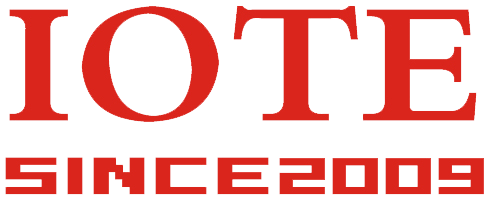

Following this year’s outbreaks of e.coli in romaine lettuce and salmonella in a number of products from eggs to breakfast cereal, Walmart is asking suppliers of leafy greens to use blockchain.
Walmart and Sam’s Club have sent a letter to suppliers of fresh, leafy greens asking them to trace their products all the way back to the farm using blockchain technology. Suppliers are expected to have all these systems in place by this time next year.
This change means the information gathered by these suppliers will be open and accessible through technology that offers real-time, end-to-end traceability from farm to table. Blockchain allows for digitised sharing of data in a secure and trusted way.
This year, many consumers and grocers were forced to throw away large amounts of romaine lettuce when an e. coli contamination in romaine lettuce spread through the food industry. Health officials at the US Centers for Disease Control told Americans to avoid eating lettuce that was grown in Yuma, Arizona.
“But it was difficult for consumers to know how to determine where their lettuce was grown,” said Frank Yiannas, VP of food safety at Walmart. “None of the bags of salad had ‘Yuma, Arizona’ on them. In the future, using the technology we’re requiring, a customer could potentially scan a bag of salad and know with certainty where it came from.”
It can be crucial to respond quickly and accurately to food safety issues such as these. But with the traditional paper-based method of capturing information that exists at many farms, packing houses and warehouses, tracking down important data from multiple sources is time consuming.
With paper-based ledgers, Yiannas said it could take his team seven days to track down where a product came from. The team has to contact the supplier, get paper records and use those records to contact the company that imported or shipped the product to Walmart’s distribution centre.
Seven days may seem like a long time, but take into consideration the path a head of romaine lettuce takes to get to the salad bowl:
Multiply this process by the 70,000 food items stocked in a typical grocery store, and it can be an almost insurmountable challenge.
“The food system is absolutely too large for any single entity to track,” Yiannas said. “We’ve been working with IBM to digitise that, so the information is captured on the farm with a handheld system. It’s also captured at the packing house at the supplier.”
Now, Walmart plans to use the power of blockchain to speed up identifying, researching and reacting to food safety situations.
Blockchain is a system of record keeping that is open to users. When a piece of permissioned information or block gets entered into the chain, other computers in the network are notified. This makes falsifying information very difficult, because the change of information is open for all to see.
Think of these blocks of information as railroad ties. To place a tie on the ground, agreement is needed by the civil engineer, the foreman and so on. Once the tie is placed on the ground, the rail the train travels on is placed on top. The tie is the block. The rail is the chain. That’s the basic concept of blockchain.
Now, imagine trying to remove and alter one of those railroad ties. It’s not that simple. The tie can’t be altered without stopping trains, removing the rails, getting agreement from the civil engineer and so on. Plus, everyone can see that the railway is being altered. There is a lot of accountability.
That’s what it is like to attempt to alter information in the blockchain. The information is out in the open creating greater transparency to changes. With increased accessibility comes more accuracy and trust.
This accuracy and trust are extremely important when public health and livelihoods are on the line. Instead of taking a week to hunt down information about potential salmonella in a product, blockchain tracking takes only a couple of seconds. This gives food safety teams and customers alike the ability to react quickly.
In fact, the Centers for Disease Control believes this change will help make more effective recalls.
“Enhanced ability to trace a contaminated food back to its source will help government agencies and companies to identify the source of a foodborne disease outbreak, coordinate more effective recalls of foods thought to be contaminated, and learn where past problems began,” said Robert Tauxe, director of CDC’s division of foodborne, waterborne and environmental diseases. “We think these steps will strengthen future prevention efforts and better protect the public’s health from the threat of foodborne illness.”
Walmart’s new requirement is about making food safer throughout the supply chain.
“Customers trust us to help them put quality food on their tables for themselves and their families,” said Charles Redfield, executive vice president of food for Walmart in the USA. “We have to go further than offering great food at an everyday low price. Our customers need to know they can trust us to help ensure that food is safe. These new requirements will help us do just that.”
Making information available in the interest of public safety is a step change for the industry. But it matters to everyone.
“When it comes to safety, this is not a competitive issue,” Yiannas said. “We all win or lose together.”